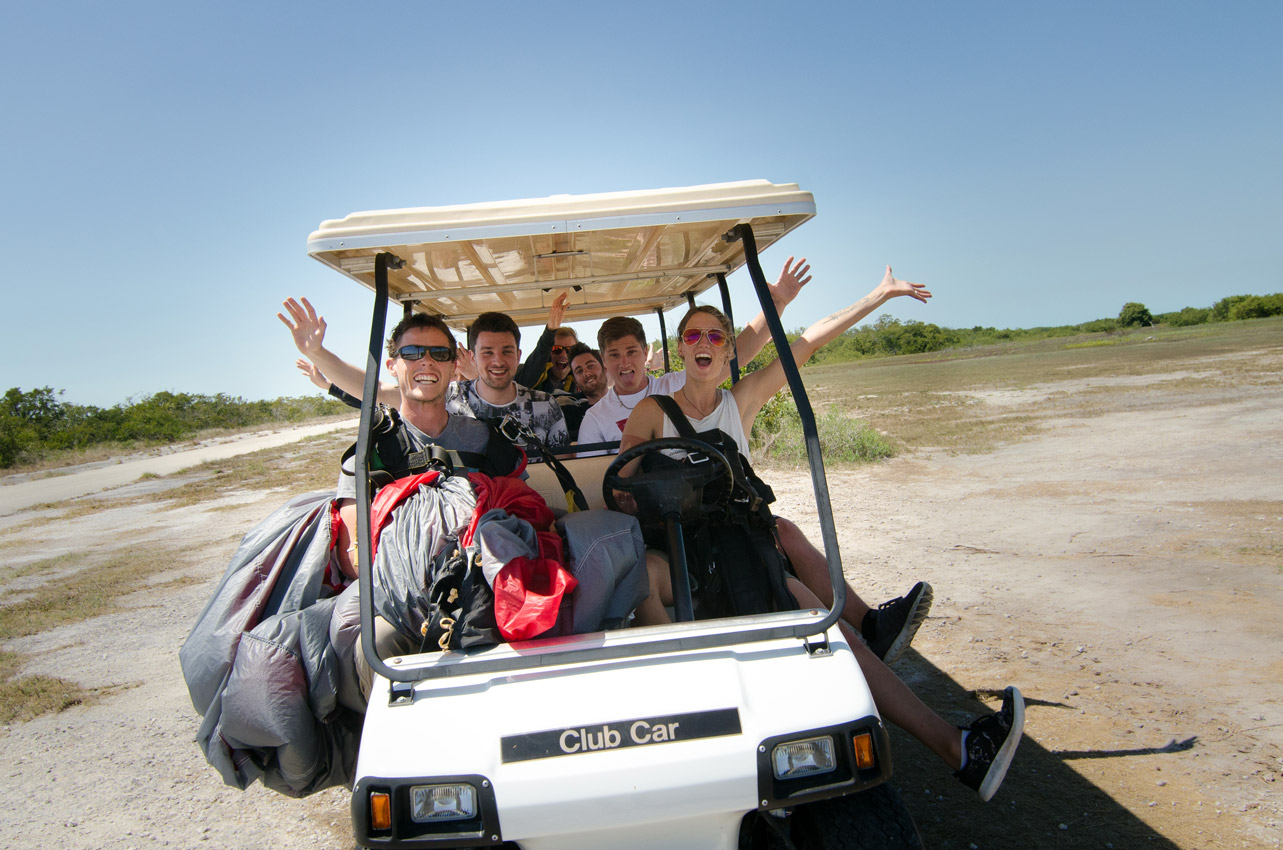What To Expect During A Skydiving Landing
Skydiving
Posted by: Skydive Key West
3 years ago
Have you ever seen those old school videos of OG skydivers plummeting to the earth under their big, round parachutes, and then not-so-softly touching down to the ground? Ouchie. Or what about the more recent videos of those super hotshot canopy pilots zipping just a few feet above the ground at record speeds? This artform, called swooping, isn’t a “normal” landing, either.
A parachute landing is the final step of a successful skydive when the canopy pilot (in the case of a tandem, the tandem instructor) gently guides the canopy to the earth and maneuvers it to create a pleasant stand up or slide-in landing.

How To Land When Skydiving
What is the landing like when skydiving? When done correctly, landing a parachute is easy-peasy and actually a really exciting experience; you’ve finally checked that item off your bucket-list!
Landing is one of the most important parts of the jump. Advances within the sport have evolved so much that we are able to choose exactly where we want to touch down, and guide our wing to that exact spot in a cool, calm, and collected manner. Neat-o!
Let’s jump into the steps each canopy pilot goes through to safely get them, and their tandem passenger, to the ground.
- Pick your spot! There is usually a landing area designated for tandems, swoopers, and other licensed jumpers and students based on their capabilities in the sport.
- Always keep your head on a swivel! This is a commonality us skydivers do religiously on every single jump. It simply means to always be on the lookout for other skydivers and obstacles.
- Fly a pattern! This one is up for debate, as there are times when a pattern is not critically necessary, say, if you’re the only skydiver in the air. A pattern allows other jumpers to predictably know where you’re going to land; is always established at the beginning of every load that flies; and is typically based on the wind direction. What’s a pattern? A landing pattern is the most predictable way to come in for landing. It consists of a downwind leg, base leg, and final leg and is typically started between 700 and 1,000 feet. Think about it like flying the ¾ sides of a rectangle.
- Flare, flare, flare! Flaring is when the canopy pilot pulls their toggles (handles) to their hips in order to slow the forward momentum and descent rate of the canopy. Think of it like applying the brakes on a car. Flaring feels like when you’re approaching a red light and begin to slow down effectively for a nice and slow stop – it doesn’t feel like when you have to suddenly stop for a little critter in the road!
- Pack up and do it again! Once we land, we geek out over how sick the jump was and go over all the things that can make it even better … then we pack our canopies and gear up to do it all again!
What Does Being Under The Canopy Feel Like?
Many people think they’ll get that “stomach drop” roller coaster feeling when they jump from the plane. This is a myth!
However, the roller coaster feeling can happen while under the parachute. When the canopy pilot makes a more aggressive or snippy turn, that funny tummy feeling can be more intense. When they make a slow and steady turn, the feeling is totally mitigated. Let your instructor know what you like (or don’t!) so they can rip it up with some sick spirals or just take a calm ride to enjoy our absolutely world-class views.
We would like to note here that we would LOVE for you to inform us beforehand if you experience motion sickness. Do not worry! There are plenty of people who skydive regularly and experience motion sickness in other aspects of their lives. Motion sickness while skydiving is rare and can almost always be prevented if we’re told before the jump! We like to know so that we can be more gentle and accommodating while under the canopy. Your safety is #1, and your comfort and level of enjoyment is a very close second!

Landing Priorities As A Tandem Student
It’s all in the hips! Well, really in the legs and core. Upon coming in for landing the two things you must do is listen to your instructor and lift those legs! Lifting your legs is important so that you and your instructor can avoid the dreaded tripping over the feet and faceplant situation (this would not make very cool photos or videos to end the jump!).
Being under the parachute is one of the most peaceful feelings this world has to offer, and we can’t wait for you to experience it. Book your tandem today and let’s get tropical! Blue skies!




